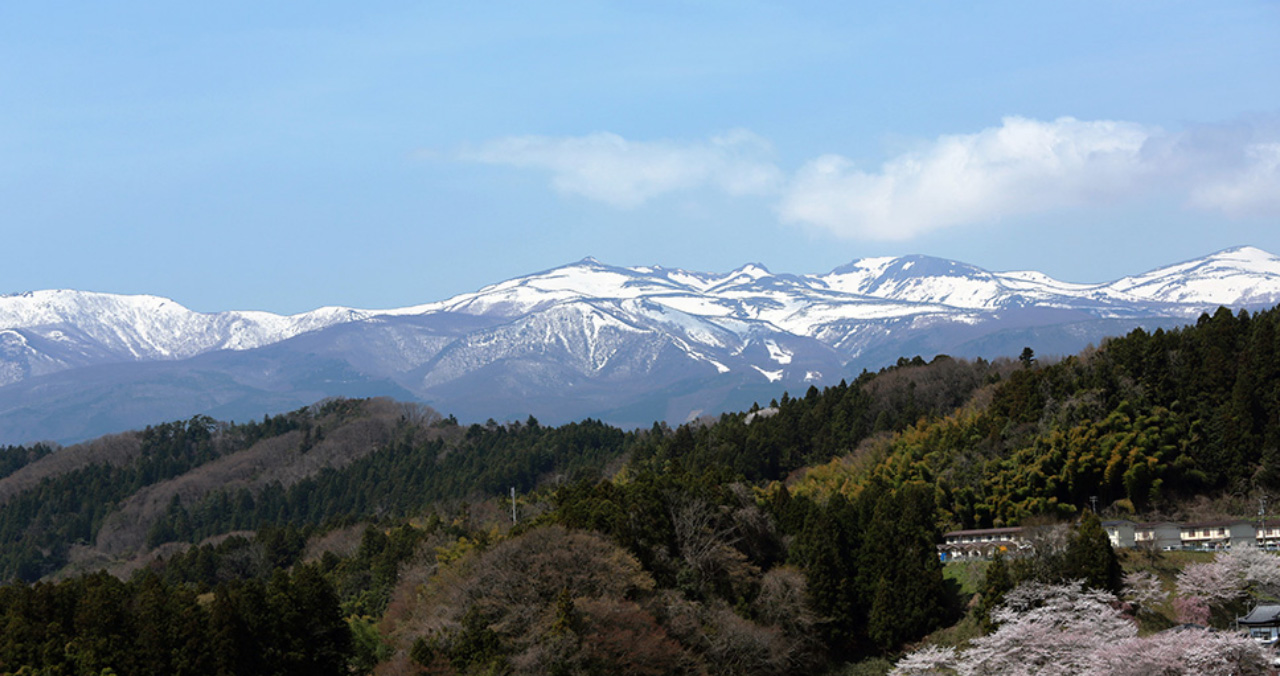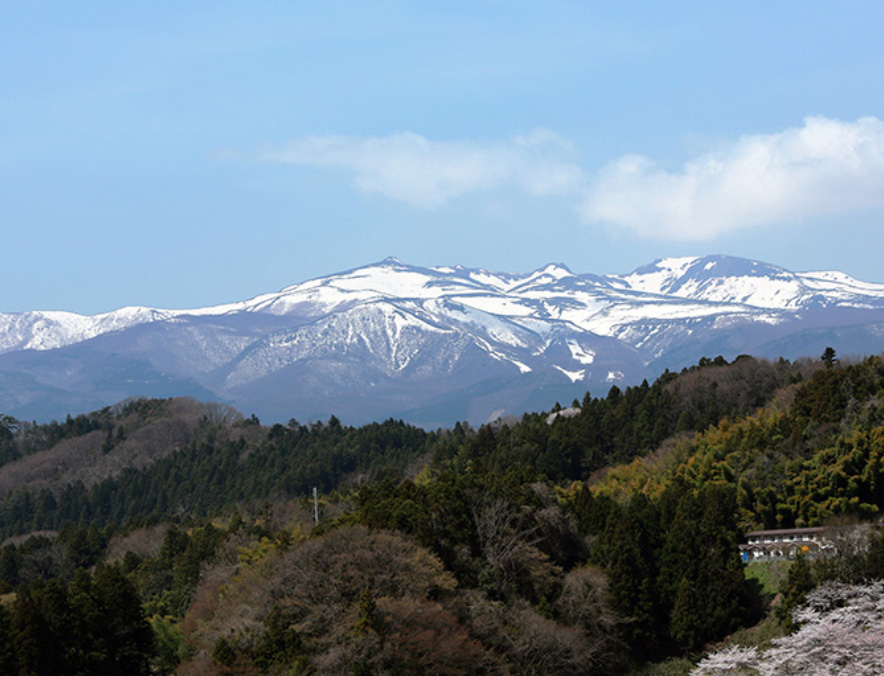Landscape
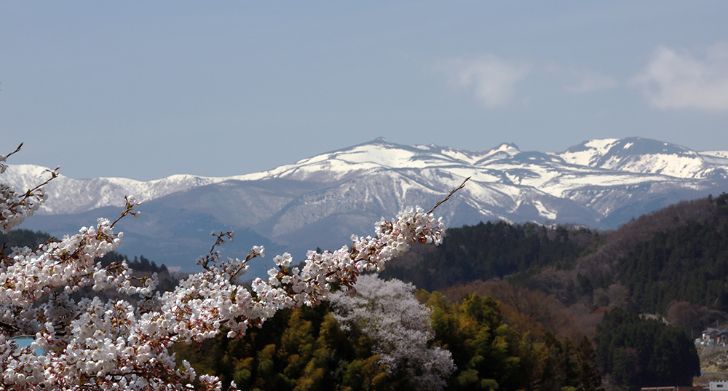
Nihonmatsu stretches in a long and narrow strip from the Abukuma mountains in the east, to Mt. Adatara in the west. The eastern part is made up of a geologically ancient granite stratum, forming gentle hills. The west is a rugged volcanic area formed by more recent geological volcanic activity. The Abukuma River flows through the center. There are many mountains and hills, and there is an altitude difference of up to 1,500m across the region. Geological upheaval and volcanic activity have created a complex and richly varied natural environment. Dake Onsen and many other hot spring resorts are found in the vicinity of Mt. Adatara, and high-quality groundwater springs are abundant at the foot of the mountain.
Despite the cold of winter, the chain of peaks running north-south also provide a barrier against the winter wind. Nihonmatsu therefore receives a relatively small amount of snow. As it is inland, daily temperatures in early summer range widely. It is also an area that experiences relatively frequent summer thunderstorms compared to the rest of the Tohoku region.
History
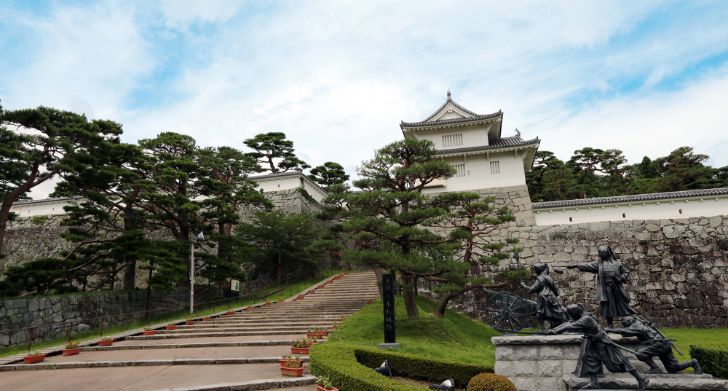
The archaeological sites that still dot the region reveal that communities already existed here about 4,500 years ago. From the fifth century onwards this was part of the old Mutsu Province. Mt. Adatara is a peak well-known throughout Japan. It is a perfectly conical active volcano and was worshiped from ancient times as a holy mountain. Three poems written about Mt. Adatara were included in the Manyoshu, an ancient collection of Japanese poetry; in their words the enormous presence of the mountain can be clearly felt. Adachigahara, along the Abukuma River, is dense with huge cedar trees, and was associated from ancient times with the “Kurozuka Demon Crone Legend.”
During the Nanbokucho period (1336-1392), Takauji Ashikaga made clan member Takakuni Hatakeyama the governor of Northern Honshu and sent him to Nihonmatsu. Takakuni built Nihonmatsu Castle at Shirahatagamine as the family residence. The Date clan of the neighboring domain became increasingly powerful, and in 1586 Masamune Date destroyed Yoshitsuna, the 12th head of the Hatakeyama clan. After that Nihonmatsu was ruled by the Date, Gamo and Kato families.
During the Edo period when the Tokugawa clan ruled Japan, Mitsushige Niwa moved here from Shirakawa. In 1643, he became the first lord of Nihonmatsu, and his domain was reckoned at 100,700 koku (a measure of rice production referring to the amount of rice necessary to feed one person for one year) and he controlled the central part of what is now Fukushima Prefecture. The Niwa family were master castle builders, and after constructing Tanakura Castle and Shirakawa's Komine Castle, they were given the task of making major repairs to Nihonmatsu Castle and improving the castle town. At the time, this was a major undertaking that required the best civil engineering technology available, and it naturally led to a heightened interest in scholarship among the family retainers. A love of learning swept the region, and the domain school “Keigakukan” produced many scholars. The 6th Lord, Takayasu followed the plan of Confucian scholar Sakuhi Iwaida. He had an inscription exhorting reformation of the domain government and enforcement of official discipline carved into a natural stone outside the administrative center of the domain. Still known as the “Kaisekimei,” this is now a national historic site. The values of the Nihonmatsu Youth Corps, who kept faith with the Northern Coalition during the Boshin War and died honorably, and the Confucian principles that can still be seen carved into the “Kaisekimei” are alive and well today as spiritual pillars of Nihonmatsu: loyalty, courage and integrity.
(Reference: History of Nihonmatsu)
Traditional Industries and Tourism
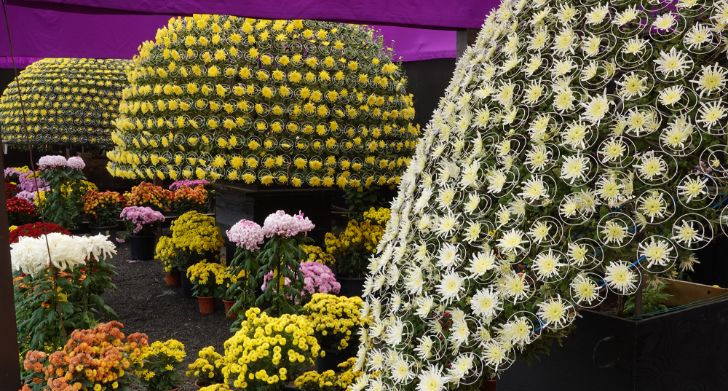
The traditional castle town industries – sake brewing, sweets, Japanese furniture, swords and banko-yaki pottery - all flourished in the Nihonmatsu region. Successful reclamation of new paddy fields enabled good quality rice to be grown in the region. It was also an area famous for its water; the “Well of Sunshine” (Hikage no Ido), one of Japan's three most famous wells, is located here. These two factors contributed significantly to the brewing industry's long and prosperous history in this area. Nihonmatsu, along with Aizu, has now become one of the top brewing areas in Fukushima Prefecture. The birthplace of Chieko, a character made famous in Kotaro Takamura's poem collection “Chieko’s Sky,” is associated with another brewing family with a long history in this region.
The tradition of growing chrysanthemums, popular both with warrior and merchant families, can be seen in what is now Japan's biggest chrysanthemum doll show. The Nihonmatsu Lantern Festival which began in 1660 is one of Japan's three most prominent lantern festivals. Dake Onsen (hot spring) is located in the remote heartland of the Nihonmatsu domain and boasts a long history, having been discovered 1,300 years ago. It is still popular as one of the Tohoku region's best hot spring areas. Adachigahara Furusato Village has been opened in the area where the Demon Crone Legend takes place.




